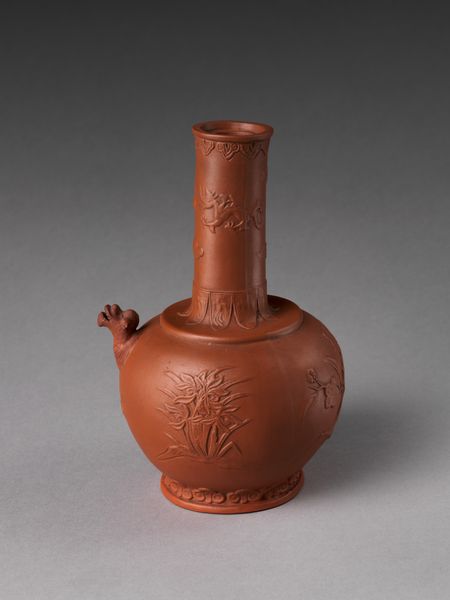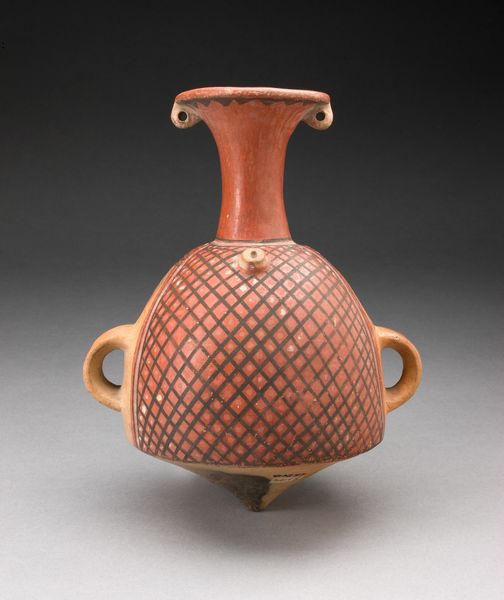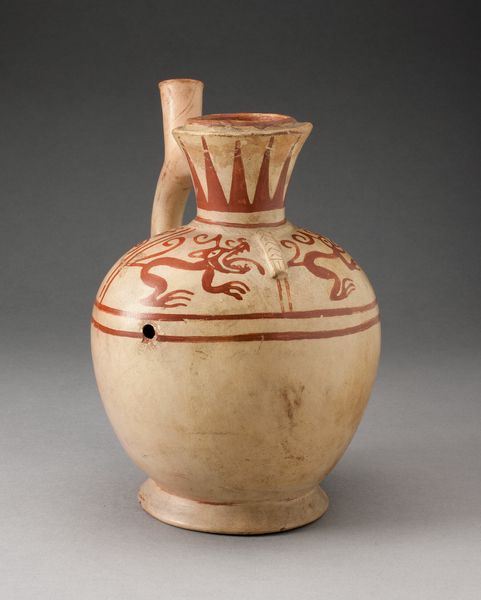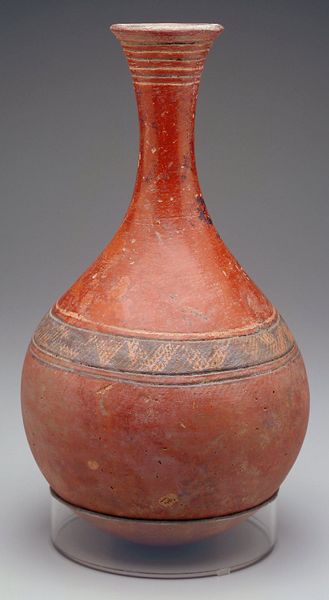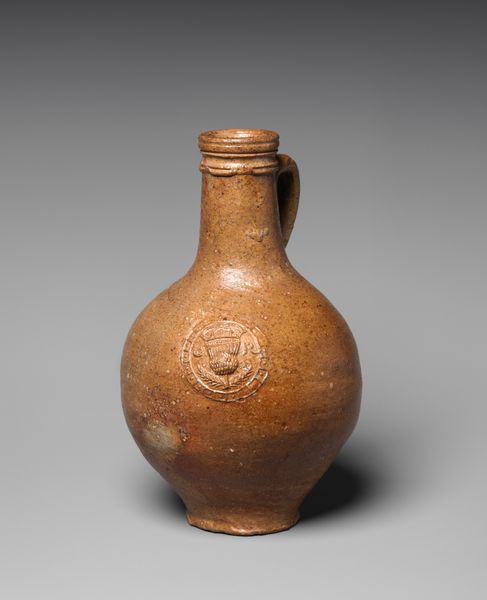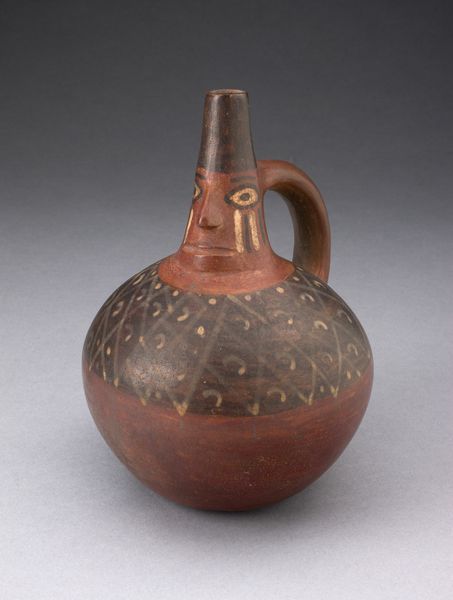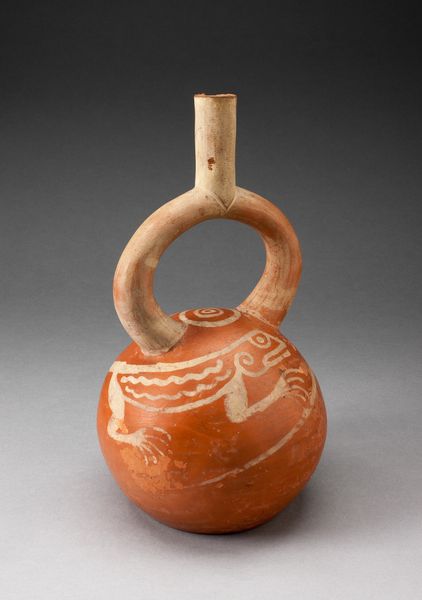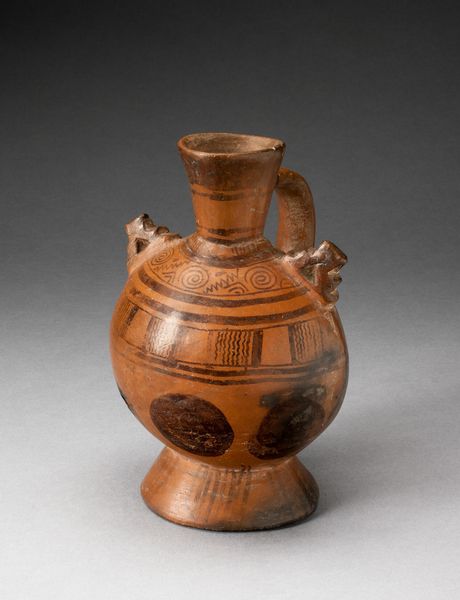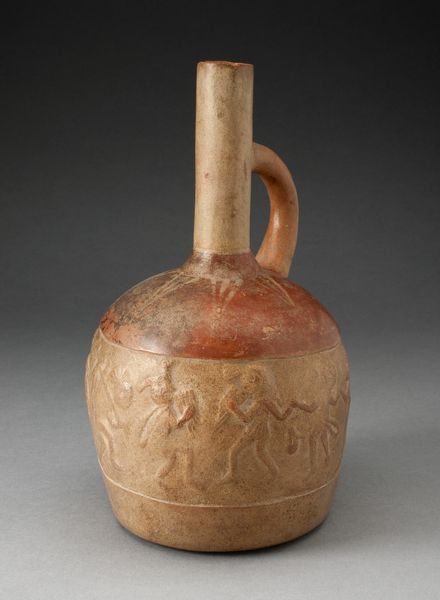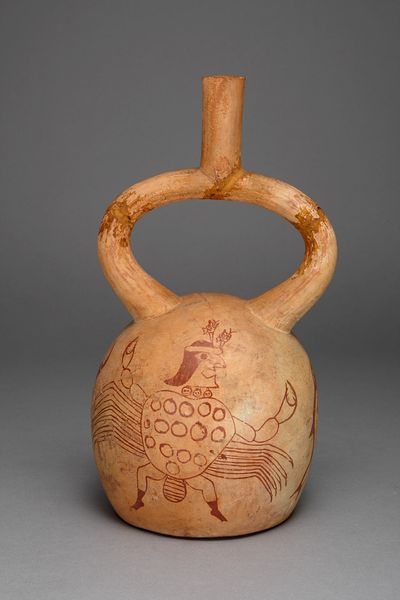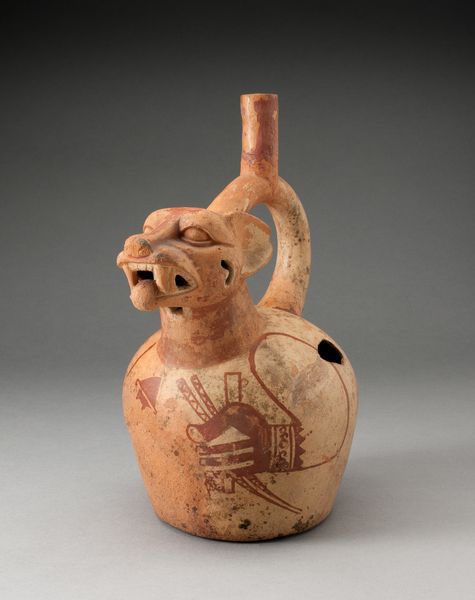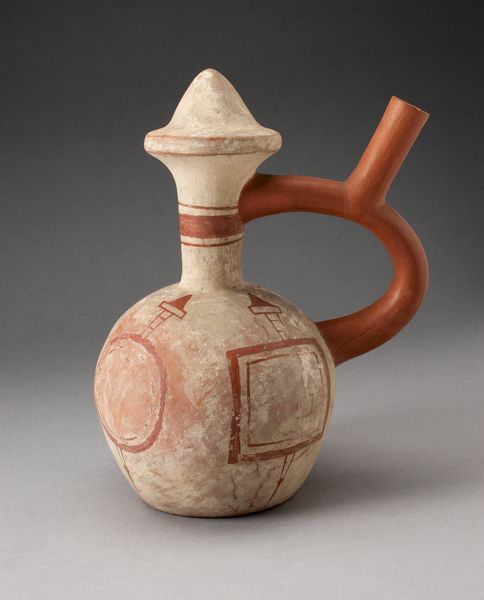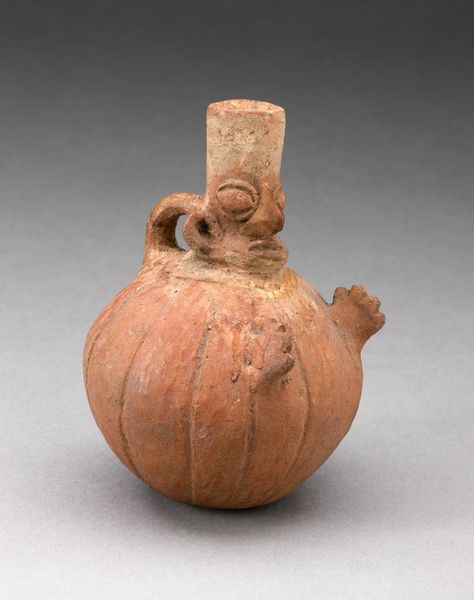
ceramic, porcelain, earthenware
#
baroque
#
asian-art
#
ceramic
#
porcelain
#
earthenware
#
ceramic
#
decorative-art
Dimensions: 17.2 × 11.4 cm (6 3/4 × 4 1/2 in.)
Copyright: Public Domain
Editor: Here we have a ceramic bottle, a Kendi, made around 1710 by the Meissen Porcelain Manufactory. The simple red hue makes the floral decorations and the dragon-shaped spout pop! How would you interpret the imagery and symbols used here? Curator: Well, the Kendi itself speaks volumes. Originating in India, it served as a ritual object, later adapted across Southeast Asia for both sacred and domestic use. Its presence in the Meissen Manufactory indicates not just artistic skill, but a cultural fascination. What feelings does this object evoke? Editor: A sense of exchange, definitely, but I hadn't considered its spiritual significance before! It's not just a bottle, it’s a vessel of traditions! Curator: Precisely! Look closer – the dragons! They’re powerful symbols of imperial authority and good fortune in Chinese culture. The floral motifs add layers, likely referencing prosperity and longevity. Considering it’s from Meissen, how do you think they perceived these symbols? Editor: As exotic and refined perhaps? Status symbols that the European elite could aspire to own? Curator: It's likely so! This is an age of exploration and mercantile activity! The adaptation isn't a simple copy; it's a reinterpretation of potent symbols for a new audience, hinting at power, trade, and cultural understanding. How interesting. Editor: I’m seeing how the bottle tells a more elaborate story! What do you take away from this exploration? Curator: By examining these layers, we appreciate how an object’s meaning evolves through cultural contact and appropriation. This bottle prompts reflection on what societies value and commemorate!
Comments
No comments
Be the first to comment and join the conversation on the ultimate creative platform.
